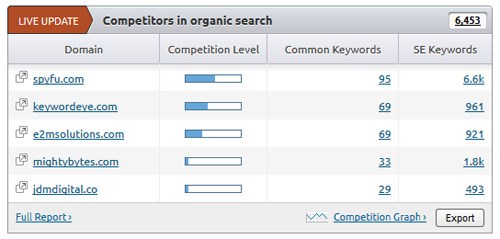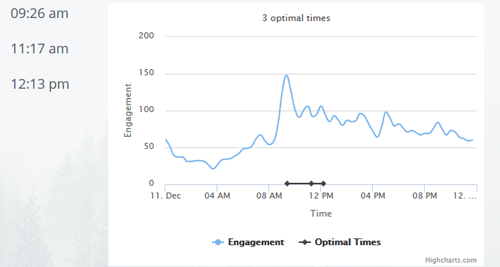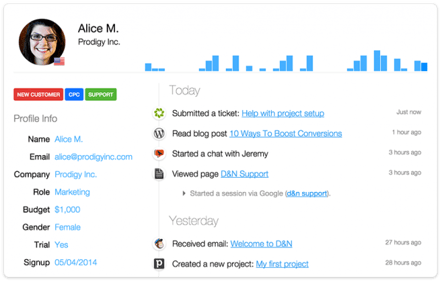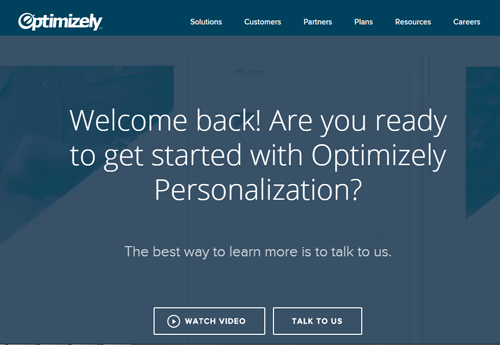Software Roadmap: Must-Have Technology for Everyday Businesses

Retailers have long paved the way for those in other industries to step up their digital games.
This is because, and increasingly so, consumers bring their commerce experiences and expectations with them to other parts of their lives, such as when visiting a publishing website or researching critical services for their employers. Similar to if business buyers were shopping for clothes or home goods on their personal time, they expect self-service options (e.g., live chat, dynamic FAQs), rich information to base their decisions on (e.g., peer reviews/testimonials, videos), flexible payment options (e.g., PayPal, monthly subscription fees) and other elements when making business decisions - all in an effort to educate themselves without ever picking up the phone. In fact, these decision-makers can be up to 90 percent through the buyer's journey before finally engaging with a sales rep.
This is bad news for those service providers (business to business, business to consumer and business to government) who have yet to digitalize their brands beyond simply hosting a website.
The good news is that savvy retailers have created a roadmap for their business-focused counterparts on what key pieces of technology they need to effectively acquire and retain customers/clients/subscribers online.
The following is a list of must-have technology for any company serious about growing their brand (note: author took some liberties that readers already have a content management system, customer relationship management solution, topnotch hosting provider and other fundamental technologies in their marketing stack):
A Competitive Research Tool
Whether it's SEMrush, SpyFu or another competitive research tool, brands across industries must actively monitor the strategies used by their competitors. SEMrush, for example, can provide enterprises with invaluable information on which to base decisions specifically around search engine marketing, such as the paid search ads their competitors are running to acquire similar audiences, the keywords they are using to take business from them, how much they are spending on certain keywords and how effective their organic search engine optimization (SEO) efforts are.

A Social Media Management Platform
Most retailers understand the importance of providing content to social users, but the really successful ones understand the importance of listening to their users on social as well. With a variety of options to choose from - Buffer, Sprout Social, Hootsuite and others - business across industries would be wise to select a social media management platform that allows them push out compelling content to current and prospective customers as well as listen and respond to the conversations being had about them on the various social networks. A social media management platform worth a company's money will allow for active listening, the ability to publish across networks and track various metrics, which will enable them to prove the return on investment (ROI) of their social media efforts.
It is important, however, to use a social media management platform in conjunction with the actual networks. Buffer, for example, will show a user the optimal times for publishing on Twitter, but a manager will need to go to Facebook directly for insights on when (day and time) their fans are logged in the most on that network. Similarly, Sprout Social and Hootsuite don't provide all the rich data that Facebook Insights has to offer.

An Email Service Provider
AWeber, Listrak, MailChimp, Campaigner, Constant Contact...the list of email service providers is long and filled with very impressive offerings (for a list of the top 50, click here). Since email consistently provides the highest ROI of any other channel, enterprises should invest accordingly with a technology partner that allows them to segment audiences (by attributes like demographics, location, behavior), test content and delivery options (such as subject lines, time of day), use or design beautiful templates with simple plug-and-play or drag-and-drop features (or more sophisticated coding options depending on their staff's experience), automate certain campaigns (like based on when a subscriber signs up) and integrate with other marketing technology such as a CRM.
An Analytics System
Google Analytics is, of course, the most popular and widely used analytics system, but there are other options. Whether it's a heatmap provider (like Crazy Egg), an open-source platform like Piwik or a tool that builds customer profiles like Woopra (shown), every company needs to see how someone got to their site, how they are behaving once there and the reasons they performed certain actions (e.g. left, bought, returned).

A Personalization Tool(s)
With more information about who is on a site and how they are behaving than ever before, all companies must put this information to work in the form of personalization. Retailers use personalization in a variety of ways, such as changing landing pages based on what a person has bought in the past or what he or she may have left in their shopping cart. Service providers can use personalization similarly in that, at the most basic level, they can welcome back a returning visitor, store information that was previously filled out (such as in a form to download a whitepaper) and alter homepages based on what the user had previously shown interest in.
In everyday life, consumers are expecting this type of personalization and are even willing to give up a certain level of privacy to get it. To compete, companies across industries will need to store, test and optimize based on past visits, purchases and behaviors or risk becoming irrelevant. Optimizely, a provider of testing and personalization tools, provides us an example (shown below). The alternative, is the returning visitor going to Optimizely.com and receiving irrelevant messaging, as he or she has already shown interest in Optimizely's personalization product.

Summary
Retailers will continue to provide the roadmap for what consumers expect from their online experience, but companies across verticals won't want to fall too behind because without these must-have technology items, or they risk never catching up.

Subscribe to Our Newsletter!
Latest in Software







